Now Viewing:
Expansion and Reform 1801-1861
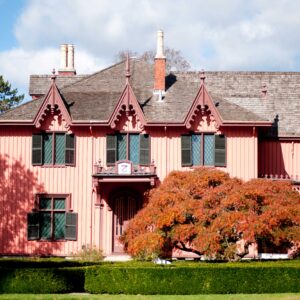
Woodstock’s Roseland Cottage
With its distinctive pink exterior, Roseland Cottage was built in 1846 in Woodstock and is an excellent example of Gothic Revival architecture.
Read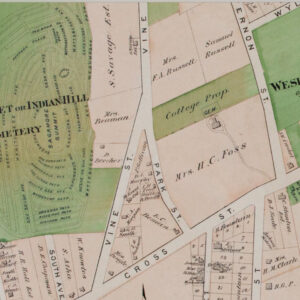
Middletown’s Beman Triangle: A Testament to Black Freedom and Resilience
One of the earliest and most politically active free Black neighborhoods in Connecticut emerged in Middletown in the late 1820s, the Beman Triangle.
Read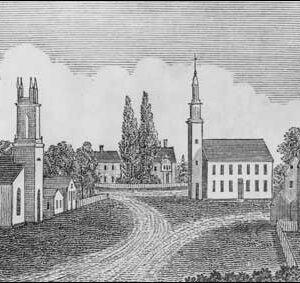
John Warner Barber’s Engravings Chronicle Connecticut History
John Warner Barber chronicled 19th-century Connecticut history through his historical writing and hundreds of engravings—many of which still exist today.
Read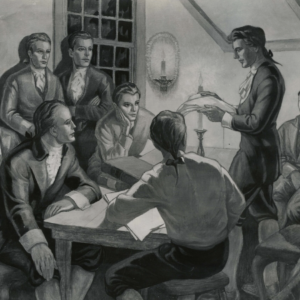
Linonian and Brothers in Unity: The Societies that Built Yale University’s Library
Two undergraduate literary societies, Linonian and Brothers in Unity, donated their large book collections to Yale’s nascent library.
Read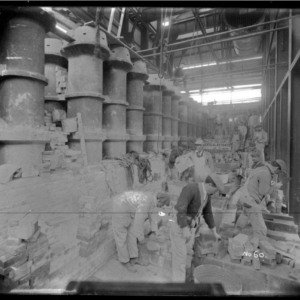
Early Connecticut Gas Light Companies
The first private gas light companies in Connecticut appeared just before 1850 in New Haven, Hartford, and Bridgeport.
Read
Connecticut History Day 2024: Turning Points in History
Connecticut has a history rich with stories of turning points in history—from events to ideas to action—that cause change.
Read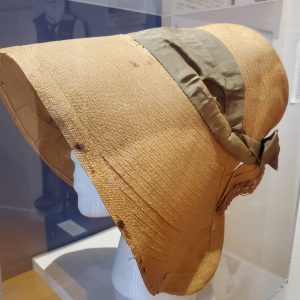
Sophia Woodhouse Welles: Wethersfield’s World-Famous Bonnet Maker
Wethersfield’s Sophia Woodhouse Welles made a name for herself as an inventor and a businesswoman in antebellum America with her bonnets.
Read
Connecticut’s First Roman Catholic Church
Hartford’s Holy Trinity Church became the first Roman Catholic church in Connecticut in 1829 and served the community for over 20 years.
Read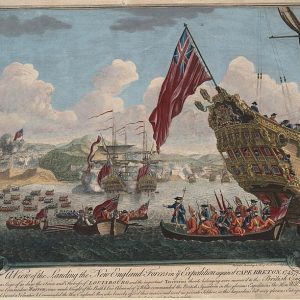
Connecticut’s French Connections
From Huguenots to French Canadian mill workers to modern immigration, Connecticut has always been a place shaped, in part, by a steady French influence.
Read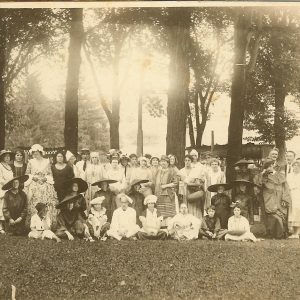
Discovering the Mysterious Identity of the “Kent Limner”
It took over a century to solve the mystery of Ammi Phillips’ identity—one of the most prolific folk portraitists in 19th century America.
Read
James Lindsey Smith Takes the Underground Railroad to Connecticut
James Lindsey Smith was one of many slaves who found freedom through the Underground Railroad network that included many stops in Connecticut.
Read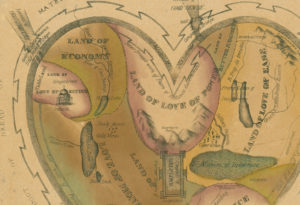
The Open and Fortified Country of the Human Heart: A Victorian Lady’s View of Love
A pair of 19th-century prints provides a virtual road map to the human heart, illustrating contemporary male and female attitudes towards courtship and love.
Read
New London Harbor Lighthouse: Connecticut’s First Official Lighthouse
New London Harbor Lighthouse, originally opened in 1761 and rebuilt in 1801, is Connecticut’s oldest surviving and tallest lighthouse.
Read
Apostle of Peace: Elihu Burritt’s Quest for Universal Brotherhood
Elihu Burritt, a blacksmith by trade, became an advocate for peace around the world throughout the 19th century.
Read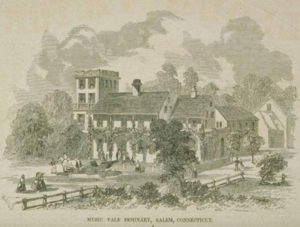
Music Vale Seminary in Salem Credited as Being First in US
In the mid-19th century, Orramel Whittlesey founded a music conservatory in Salem, Connecticut.
Read
“Appalling Calamity”: Loss of the Steamboat Lexington – Today in History: January 13, 1840
On January 13, 1840, over 150 people perished on Long Island Sound when the steamboat Lexington caught fire.
Read
Benjamin Silliman and the Collection That Inspired the Yale Peabody Museum
Benjamin Silliman published the first American study of a meteor—having acquired access to one that fell near the town of Weston.
Read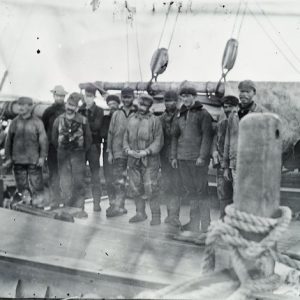
Africans in Search of the American Dream: Cape Verdean Whalers and Sealers
Cape Verdeans formed parts of whaling and sealing crews leaving Connecticut since the early 19th century, sometimes even rising to positions of authority.
Read
The Stamford Foundry Company Made Notable Stoves
When it ceased operations in the mid-1950s after over 120 years, The Stamford Foundry Company was the oldest known stove works in America.
Read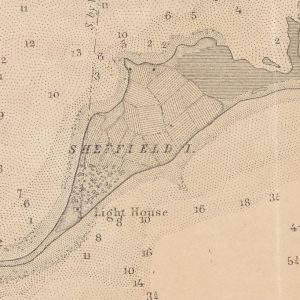
The “Welcoming Beacon” of Sheffield Island Lighthouse
Sheffield Island, is home to one of Connecticut’s historic lighthouses—a stone structure with a celebrated past dating back two hundred years.
Read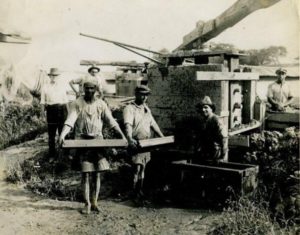
Building a Nation Brick by Brick
Brick making was an important industry in Windsor even in its colonial days.
Read
Sylvester Graham: Progressive Advocate for Healthy Living
Sylvester Graham is known as much for his sermons on morality as his advocacy of a healthy lifestyle and his creation of the graham cracker.
Read
Connecticut’s First Mutual Savings Bank Opens in Hartford
On June 1, 1819, Governor Oliver Wolcott Jr. approved a legislative charter for the Society for Savings in Hartford—the first mutual savings bank in the state.
Read
Elisha Root Changes Industry – Who Knew?
Elisha Root standardized production and made the Colt revolver the first handgun in the world with fully interchangeable parts.
Read
Lee’s Academy: An Icon of Education for 200 Years
For over two hundred years, Lee’s Academy has been a staple of education in Madison, Connecticut.
Read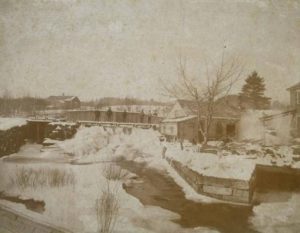
Ashford’s Glass from the Past
In 1857, 13 stockholders invested $18,000 to form the Westford Glass Company—Ashford’s largest and most famous business enterprise.
Read
Amasa Goodyear and Son Re-Invent Naugatuck
Born in New Haven, Amasa Goodyear was an inventor, manufacturer, merchant, and farmer.
Read
The Amistad
After enslaved people revolted and took control of the Amistad in 1839, Americans captured the ship off Long Island and imprisoned the enslaved in New Haven.
Read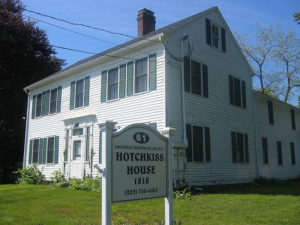
[Archived] The Legacy of David Miles Hotchkiss
David Miles Hotchkiss was an educator, abolitionist, and public servant who served the town of Prospect throughout his entire life.
Read
Prospect’s David Miles Hotchkiss and the Free Soil Party
David Miles Hotchkiss was an educator, abolitionist, and public servant who served the town of Prospect throughout his entire life.
Read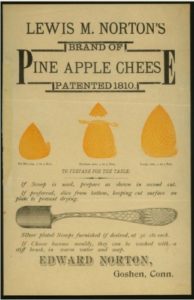
The Story of Pineapple Cheese
On a farm in West Goshen, Lewis Norton made one of the more unusual and popular foods of the 19th century, pineapple cheese.
Read
Benjamin Dutton Beecher had a Penchant for Invention
Described by some as “eccentric,” Benjamin Dutton Beecher was a millwright and machinist with a knack for invention.
Read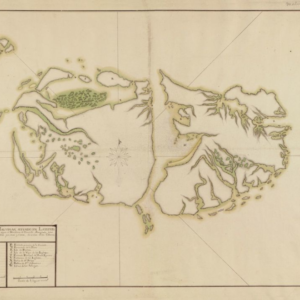
The Incident of the Stonington Schooner ‘Breakwater’: A View from Indian Country
Hundreds of American Indians served as mariners, including on the Stonington schooner ‘Breakwater,’ which survived capture in the Falkland Islands.
Read
John Brown: A Portrait of Violent Abolitionism
John Brown of Torrington used violence to oppose the spread of slavery prior to the Civil War, ultimately leading a bloody raid on the armory in Harper’s Ferry, Virginia.
Read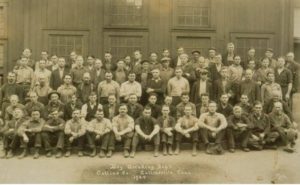
World-renowned Maker of Axes: The Collins Company of Canton
The New England factory town of Collinsville, which can still be toured today, once supplied the world with axes, machetes, and other edge tools.
Read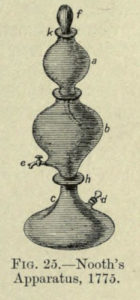
Benjamin Silliman and Soda Water – Who Knew?
Yale’s first professor of chemistry, Benjamin Silliman, was also the first American to produce soda water in bulk.
Read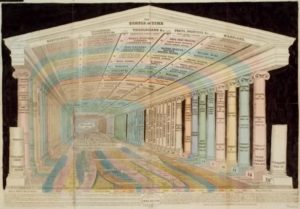
Emma Hart Willard: Leader in Women’s Education
Berlin-born Emma Hart Willard used her passion for learning to create new educational opportunities for women and foster the growth of the co-ed system.
Read
A Different Look at the Amistad Trial: The Teenager Who Helped Save the Mende Captives
James Benajmin Covey, a former slave, was only 14 years old when asked to serve in one of the most publicized trials in American history.
Read
Samuel Colt: From Yankee Peddler to American Tycoon
Hartford native Samuel Colt built a financial empire on his design and automated production of the revolver.
Read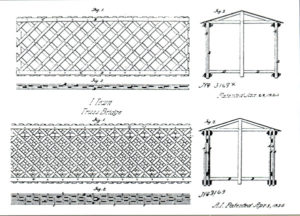
Town Patents the Lattice Truss Bridge – Today in History: January 28
On January 28, 1820, architect Ithiel Town was granted a patent for a wooden truss bridge, also known as Town’s Lattice Truss.
Read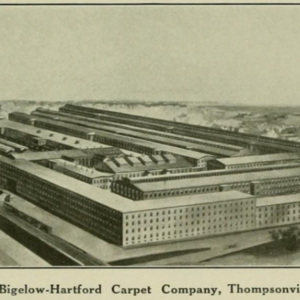
First Connecticut Carpet Mills Emerge in Simsbury and Enfield
In the 1820s, the first two notable carpetmakers emerged in the north central part of Connecticut—the Tariff Manufacturing Company and the Thompsonville Carpet Manufacturing Company.
Read
Henry Barnard Advances State and National Education Initiatives
This 19th-century reformer sought to promote harmonious social and civic behavior by revamping the US school system.
Read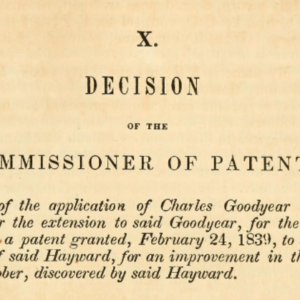
Rubber Vulcanization and the Myth of Nathaniel Hayward
Colchester has a persistent myth that Hayward invented vulcanization—a process that helps make rubber useful for manufacturing—but did not receive the credit he deserved.
Read
“Tom Thumb” Born – Today in History: January 4
Charles Stratton, born in Bridgeport on January 4, 1838, toured the world with P. T. Barnum under the name, General Tom Thumb.
Read
Farmington Canal Designed to Give Connecticut Commerce a Competitive Edge
The Farmington Canal serves as an example of how developments in transportation played a pivotal role in facilitating the country’s industrial activity.
Read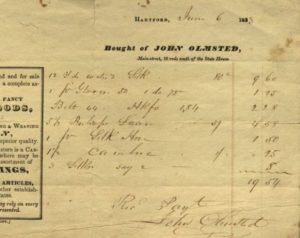
An Inconvenient Season: Charlotte Cowles’s Letters from December 1839
Letters between a sister in Farmington and a brother in Hartford reveal details about daily life at a time when the distance between the two communities wasn’t so easily traveled.
Read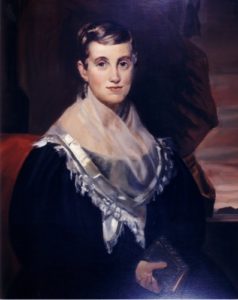
Prudence Crandall Fights for Equal Access to Education
A headmistress champions education for African American women and although forced to close her school in 1834, she helped win the battle for generations that followed.
Read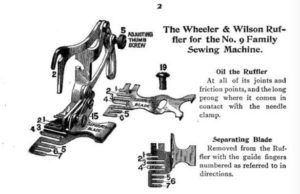
Wheeler & Wilson: A Stitchy Situation in Watertown
The Watertown firm of Wheeler & Wilson Manufacturing produced one of the most successful products of the late 19th century.
Read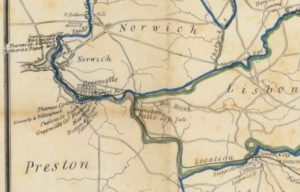
Lisbon Tunnel Completed – Today in History: August 28
The Norwich and Worcester Railroad built the first railroad tunnel in Connecticut, and one of the first in the nation, in the town of Lisbon in the 1830s.
Read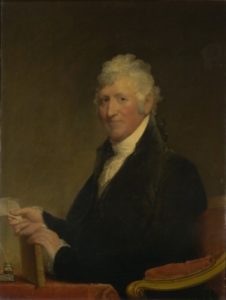
David Humphreys, Soldier, Statesman, and Agricultural Innovator
Despite an accomplished political career, this Derby-born gentleman of means is best remembered for introducing Merino sheep to North America.
Read
The Rev. Amos Beman’s Devotion to Education, Social Activism, and New Haven
Amos Beman spent much of his life a religious leader and social activist in New Haven, fighting the stereotypes and other obstacles he encountered because of his race.
Read
The Danbury Hatters
References to the hat making industry abound in Danbury and continue to shape much of the city’s identity today.
Read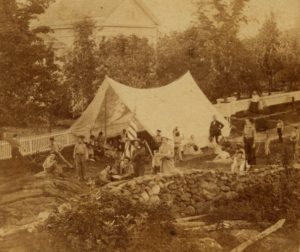
Reading, Writing, and the Great Outdoors: Frederick Gunn’s School Transforms Victorian-era Education
In 1850, this educator, prominent abolitionist, and outdoorsman founded The Gunnery, a school in Washington, Connecticut.
Read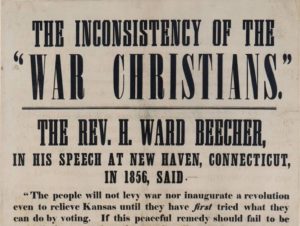
Henry Ward Beecher, a Preacher with Political Clout
This skilled orator championed woman suffrage, temperance, and the cause of anti-slavery but scandal nearly derailed his career.
Read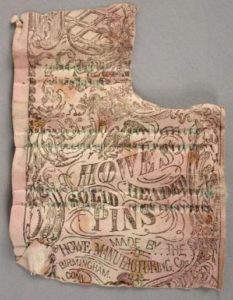
John Howe Makes a Better Pin – Today in History: June 22
On June 22, 1832, John Ireland Howe (from Ridgefield, Connecticut) invented the first practical machine for manufacturing pins.
Read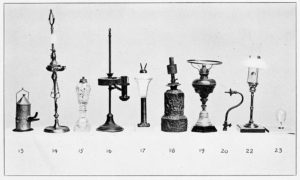
Connecticut Domestic Oil Lamp Makers
In a time before gas lamps and incandescent bulbs were more widely embraced, Connecticut firms made oil lamps using various fuels, burners, and different materials.
Read
Steaming Across the Atlantic
New London’s advantageous location on Long Island Sound made it a center for innovation in the transportation of goods and services by sea.
Read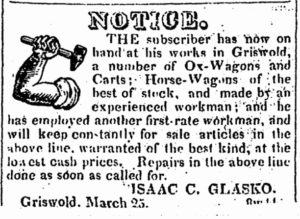
Blacksmith Isaac Glasko Challenges the State Constitution
Isaac Glasko was a blacksmith of mixed African American and Native American descent who challenged 19th-century voting rights in Connecticut.
Read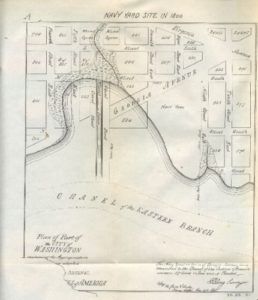
Colt’s Submarine Battery – Today in History: April 13
On April 13, 1844, Samuel Colt blew up a schooner on the Potomac River to demonstrate the effectiveness of his invention.
Read
The Litchfield Law School: Connecticut’s First Law School
The Litchfield Law School, founded in 1784 by Tapping Reeve, became the first professional law school in Connecticut.
Read
Charles Goodyear’s Machine for Making Rubber Fabrics
Credited with discovering the vulcanization process that fortified rubber against extreme temperature changes, Charles Goodyear received several patents over his lifetime.
Read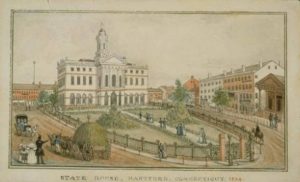
Jackson v. Bulloch and the End of Slavery in Connecticut
Nancy Jackson sued for her freedom in 1837. Her victory helped further the abolitionist cause in a state slowly moving toward outlawing slavery.
Read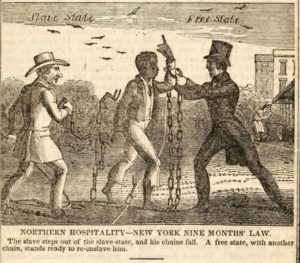
The Fugitive and the Hero
A runaway slave, evading the legal realities of the Fugitive Slave Law while working aboard the steamship Hero, jumped ship in East Haddam, narrowly avoiding the slave catchers that awaited him in Hartford.
Read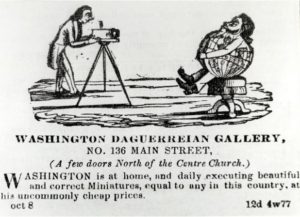
Augustus Washington (1820 – 1875): African American Daguerreotypist
Though his work depicts people of different classes and cultures, ironically, no portraits of African Americans survive from his years in Hartford.
Read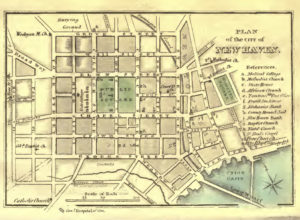
The Successes and Struggles of New Haven Entrepreneur William Lanson
The life of this savvy businessman illustrates the possibilities—and limits—urban Connecticut presented to African Americans in the early 1800s.
Read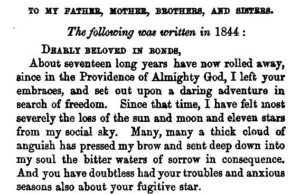
Reverend James Pennington: A Voice for Freedom
Having escaped from slavery in Maryland, this accomplished pastor, publisher, and freedom fighter challenged racism wherever he found it, even within the ranks of the abolitionist movement and the ministry.
Read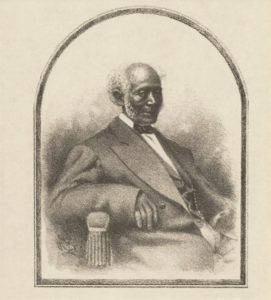
James Williams, More than Trinity College’s Janitor
James Williams was an escaped slave who became a janitor at Trinity College from the institution’s founding in 1823 until his death in 1878.
Read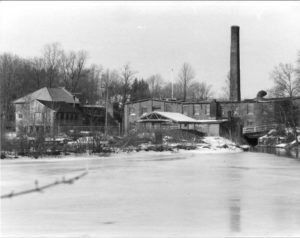
Bevin Brothers Helps Transform East Hampton into Belltown, USA
Home to 30 different bell manufacturers, the town of East Hampton is informally known as “Belltown, USA.”
Read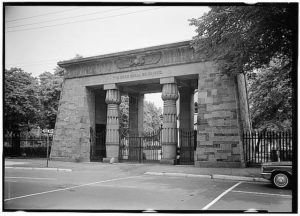
Father of Architects Born – Today in History: December 4
On December 4, 1804, “Father of Architects” Henry Austin was born in the Mt. Carmel section of Hamden, Connecticut.
Read
Kate Moore: Lighthouse Keeper and Coast Guard Heroine
In the 1800s, Kate Moore was pioneering lighthouse keeper in Bridgeport, assuming her responsibilities at age twelve.
Read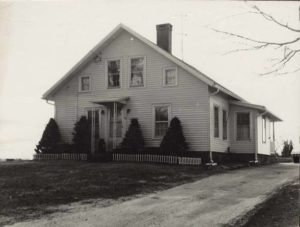
Seth Thomas Works Around the Clock in Wolcott
Seth Thomas was a Connecticut native who became a pioneer in the mass production of high-quality wooden clocks.
Read
From the State Historian: The Final Journey of Nathaniel Lyon
The first Union general to die in the Civil War, this soldier from Eastford received national attention as mourners gathered to pay tribute.
Read
State Heroine Prudence Crandall
Prudence Crandall was born in 1803 in Hopkinton, Rhode Island, the daughter of Quaker parents.
Read
Connecticut’s Mulberry Craze
Connecticut, especially Windham and Tolland Counties, was the epicenter of US raw-silk production in the mid-19th century.
Read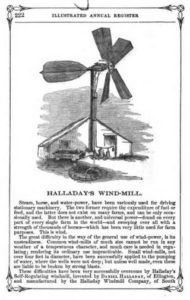
Halladay’s Revolutionary Windmill – Today in History: August 29
On August 29, 1854, Daniel Halladay a machinist, inventor, and businessman patented the first commercially viable windmill—Halladay’s Self-Governing Windmill.
Read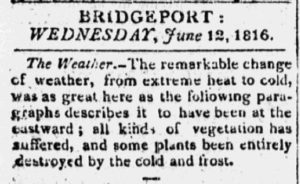
Eighteen-hundred-and-froze-to-death: 1816, The Year Without a Summer
Sunspots and volcanic eruptions led to cooler than normal temperatures in the summer of 1816.
Read
Steam Railroads Transform Connecticut Travel and Commerce
In 1832, the state chartered its first railroad and ushered in a new age of fast, and sometimes dangerous, regional transportation.
Read
Branford’s History Is Set in Stone
Recognized for its superior quality, the polished rock that came out of Branford traveled by schooner or rail to points as far as Chicago and New Orleans.
Read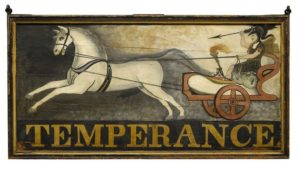
Hope for the West: The Life and Mission of Lyman Beecher
Lyman Beecher was one of the most influential Protestant preachers of the 19th century, as well as father to some of the nation’s greatest preachers, writers, and social activists.
Read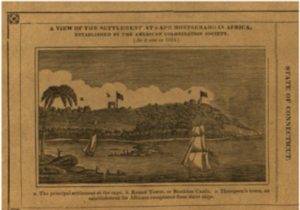
Liberian Independence Day
The Colonization Society of Connecticut was part of a national movement that arose before the Civil War to promote emigration of free Black people to Africa.
Read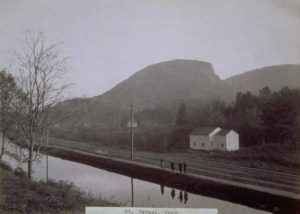
New England’s Grand Ambition: The Farmington Canal
Connecticut took leading role in waterway that transformed the region’s commerce.
Read
An Eccentric Middletown Polymath and Fossil Collector: Dr. Joseph Barratt
Despite his struggles with mental illness, Joseph Barratt was a significant contributor to the study of natural history in the Connecticut Valley.
Read
The Most Famous American in the World
In 1853, in cities and villages across Britain and Europe, throngs of admirers pushed to catch a glimpse of a barely 5-foot-tall writer from America whose best-selling novel had taken slavery to task.
Read
Furniture Caster Patented – Today in History: June 30
On June 30, 1838, the US patent No. 821—the first for a furniture caster—was granted to the Blake Brothers of New Haven.
Read
Hidden Nearby: John Brown’s Torrington Birthplace
Ruins are all that remain of the birthplace of this transformative figure in US history.
Read
Early 19th-Century Immigration in Connecticut
Numerous factors contributed to the growth of Connecticut in the decades following American independence.
Read
The Revolving Gun – Today in History: February 25
On February 25, 1836, Samuel Colt received a patent for a “revolving gun” US patent number 138, later known as 9430X.
Read
Baptist Missionaries at Work in 19th-Century Burma
Justus Vinton was a missionary and humanitarian dedicated to spreading the Baptist religion around the world.
Read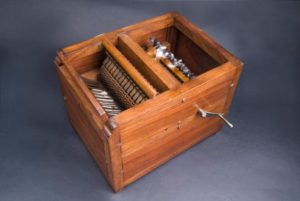
North and South: The Legacy of Eli Whitney
After studying to become a lawyer, Eli Whitney actually helped further American industrial production methods through his numerous clever inventions.
Read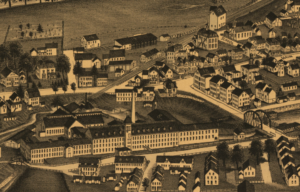
The Industrial Revolution Comes to Jewett City
The site of earlier mills, Jewett City seemed well-suited to the Tibbets’ textile enterprise: the Jewett City Cotton Manufacturing Company.
Read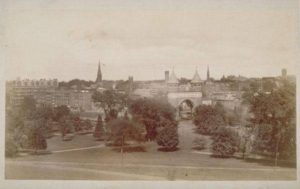
Land Purchase Becomes Bushnell Park – Today in History: January 5
On January 5, 1854, Hartford voters approved spending over $100,000 in public funds for land that would become a municipal park.
Read
Noble Jerome’s Clock Patent Model
Noble Jerome submitted this clock patent model to the US Patent Office along with his patent application in 1839, a common requirement up until the 1880s.
Read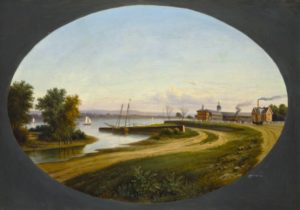
The Colt Patent Fire-Arms Manufacturing Company
Samuel Colt, the man who revolutionized firearms manufacturing in the United States, was born in Hartford, Connecticut, on July 19, 1814.
Read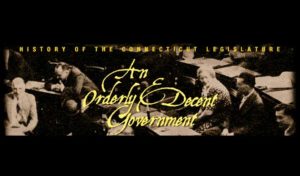
An Orderly & Decent Government: A Society in Ferment, 1819-1865
Industry, immigration, and urbanization characterized Connecticut in the 19th century.
Read
An Orderly & Decent Government: Significant Events & Developments, 1819-1865
Connecticut in the 1830s was characterized by a move from agriculture to industry, and the loss of residents to westward migration.
Read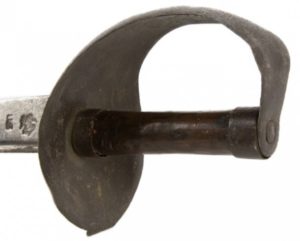
Nathan Starr’s Cutlass Fought the War of 1812
On May 18, 1808, the Navy Agent Joseph Hull of New London negotiated a contract with Nathan Starr of Middletown for 2,000 cutlasses.
Read
Windsor Engineers Success
In recognition of the importance of the canal and the village in fostering local economic development, the area was given the name Windsor Locks in 1854.
Read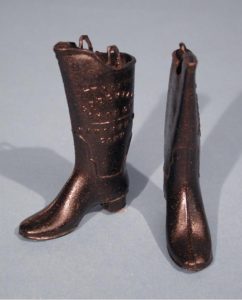
Charles Goodyear and the Vulcanization of Rubber
Obsessive dedication transformed rubber into a viable commercial material and made the town of Naugatuck one of its leading manufacturing sites in the 1800s.
Read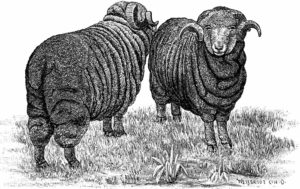
Textile Mills in Oxford Dominated Early Industry
Domestic wool production is one of the oldest industries in the United States. The first mill in Connecticut arrived in Hartford in 1788.
Read
Nathaniel Lyon: Colorful Commander from Connecticut
The military exploits of this passionate abolitionist include an attack on pro-secessionist forces that may have assured Missouri remained part of the Union.
ReadMore Articles



